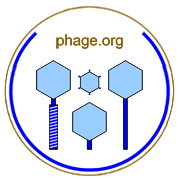

Relative number of plaques that a phage stock is capable of producing.
EOP is always relative to some other value, either the experimentally determined phage total count (absolute efficiency of plating) or relative to plating under different conditions, such as using a different indicator bacterium (relative efficiency of plating).
Note that efficiency of plating is not equivalent to phage viability on a given host or under a given set of conditions, though it often is used as such. This non-equivalency is a consequence of the complexity of plaque formation, which requires not just phage ability to productively infect a given host (= viability) but also rate of phage population growth as well as physical virion spread within a bacterial lawn, and even rate and extent of bacterial lawn growth.
See efficiency of center of infection for further discussion of this non-equivalence of phage inviability and failure to form plaques. For additional discussion of this issue, see Abedon and Yin (2009).
This is the definition from Adams (1959), p. 439: "Plaque titer of a phage preparation, determined by plating under stated conditions, relative to some other estimate, usually higher, of the concentration of phage particles."
For more on this topic, see Wikipedia, Google, and PubMed. Contact web master. Return to terms.